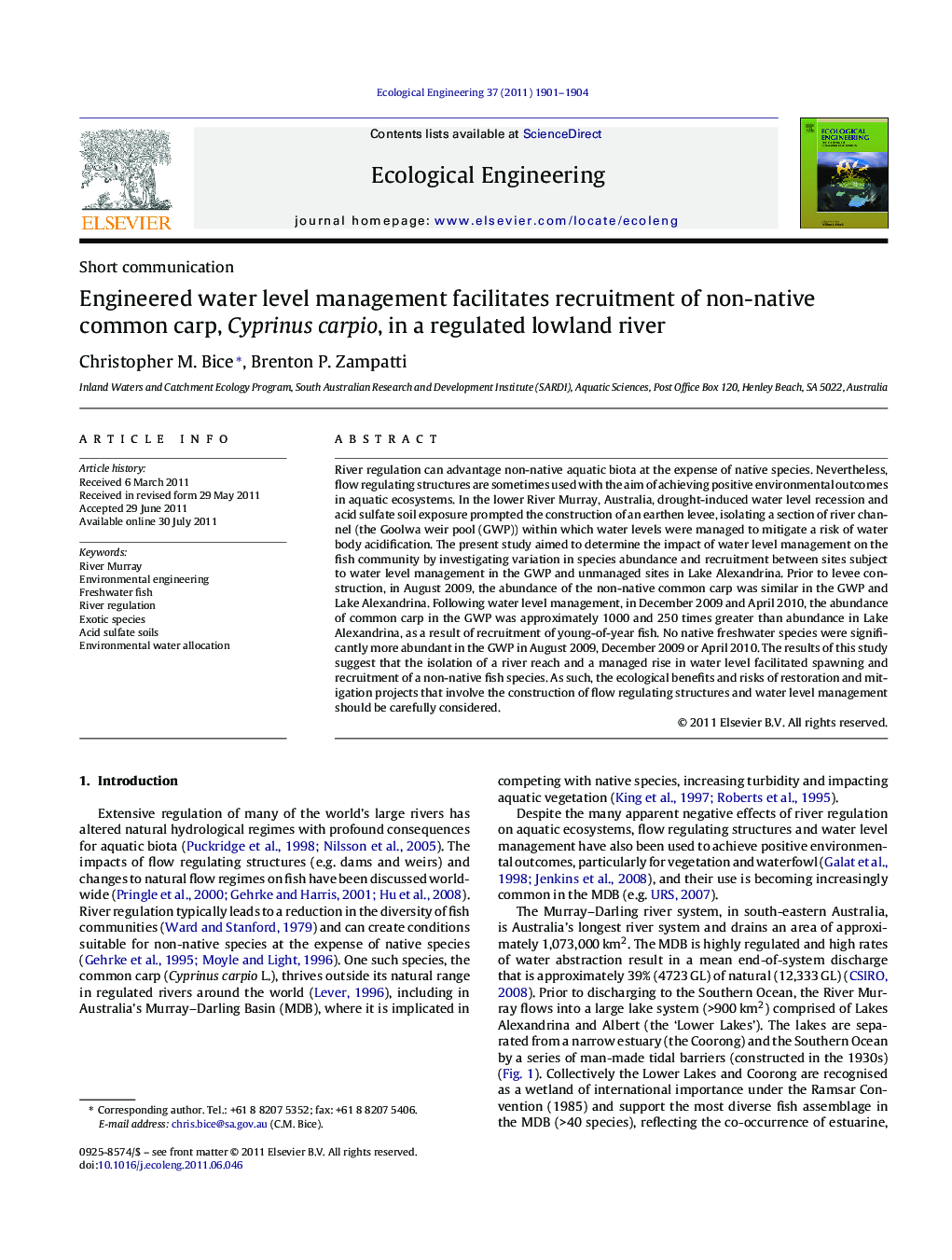| Article ID | Journal | Published Year | Pages | File Type |
|---|---|---|---|---|
| 4390143 | Ecological Engineering | 2011 | 4 Pages |
Abstract
River regulation can advantage non-native aquatic biota at the expense of native species. Nevertheless, flow regulating structures are sometimes used with the aim of achieving positive environmental outcomes in aquatic ecosystems. In the lower River Murray, Australia, drought-induced water level recession and acid sulfate soil exposure prompted the construction of an earthen levee, isolating a section of river channel (the Goolwa weir pool (GWP)) within which water levels were managed to mitigate a risk of water body acidification. The present study aimed to determine the impact of water level management on the fish community by investigating variation in species abundance and recruitment between sites subject to water level management in the GWP and unmanaged sites in Lake Alexandrina. Prior to levee construction, in August 2009, the abundance of the non-native common carp was similar in the GWP and Lake Alexandrina. Following water level management, in December 2009 and April 2010, the abundance of common carp in the GWP was approximately 1000 and 250 times greater than abundance in Lake Alexandrina, as a result of recruitment of young-of-year fish. No native freshwater species were significantly more abundant in the GWP in August 2009, December 2009 or April 2010. The results of this study suggest that the isolation of a river reach and a managed rise in water level facilitated spawning and recruitment of a non-native fish species. As such, the ecological benefits and risks of restoration and mitigation projects that involve the construction of flow regulating structures and water level management should be carefully considered.
Keywords
Related Topics
Life Sciences
Agricultural and Biological Sciences
Ecology, Evolution, Behavior and Systematics
Authors
Christopher M. Bice, Brenton P. Zampatti,
